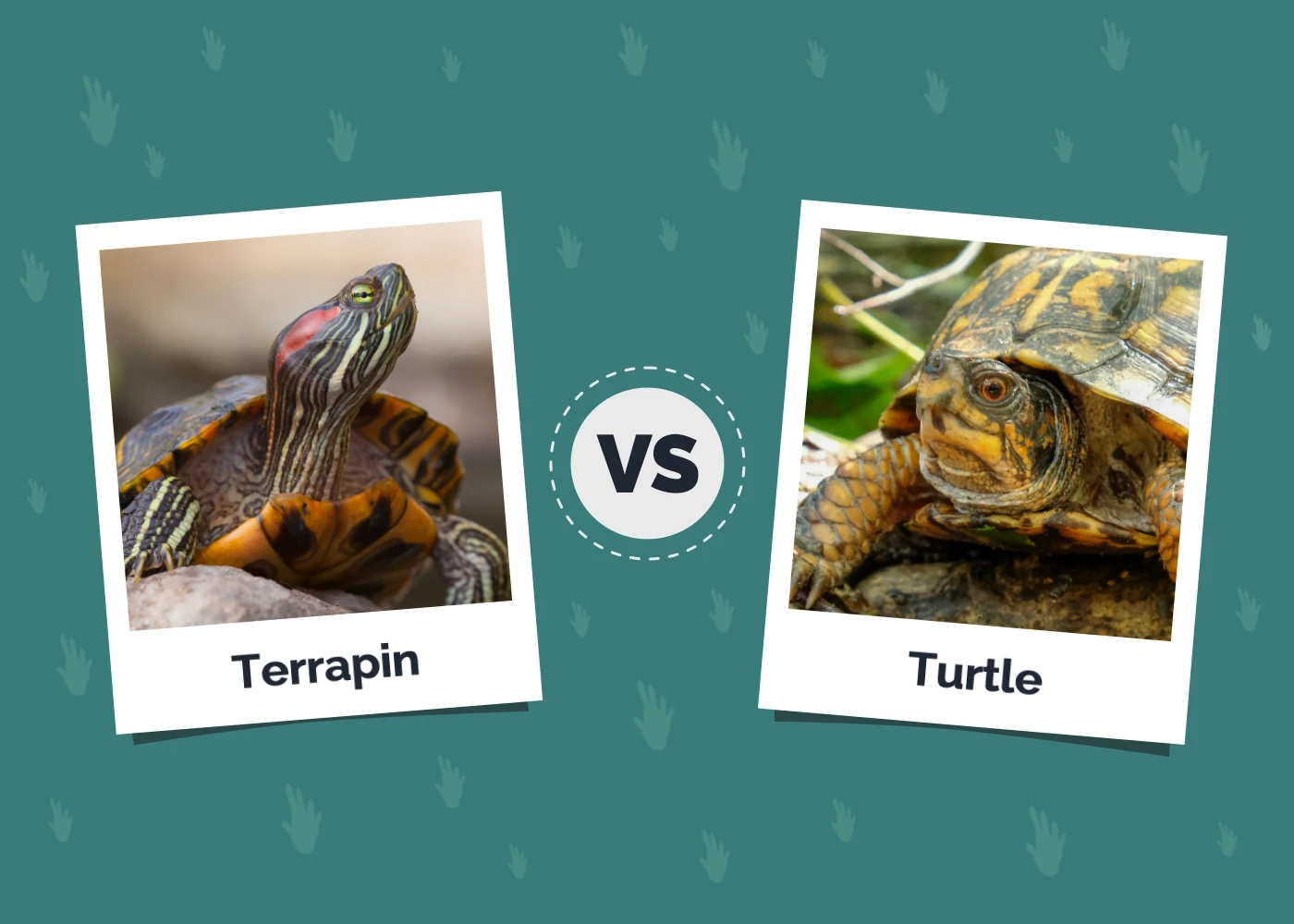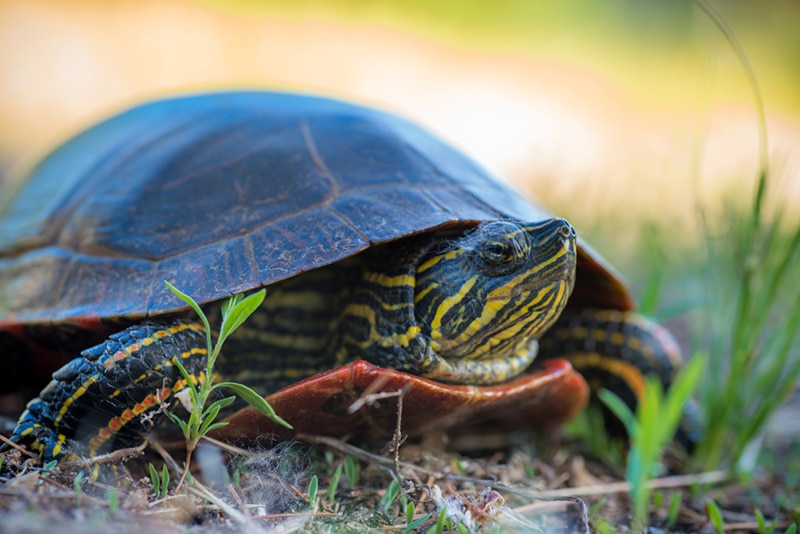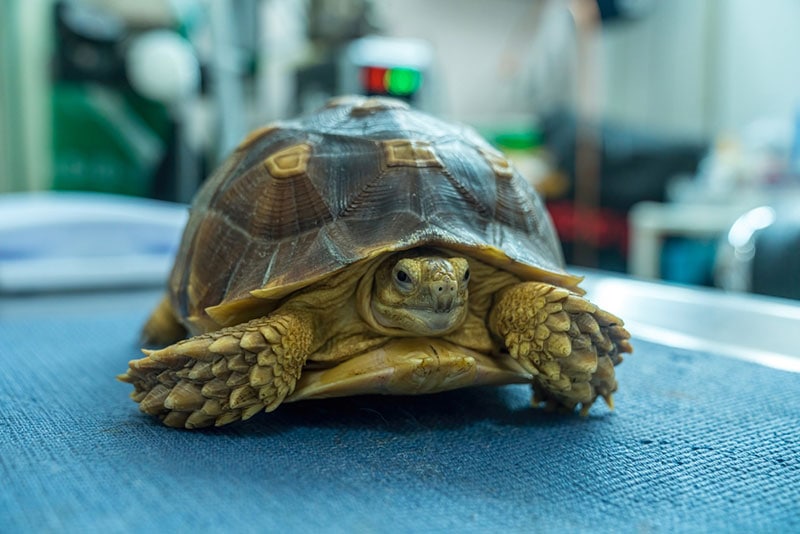10 Best Tortoise Bedding & Substrates – 2024 Reviews & Top Picks

Updated on
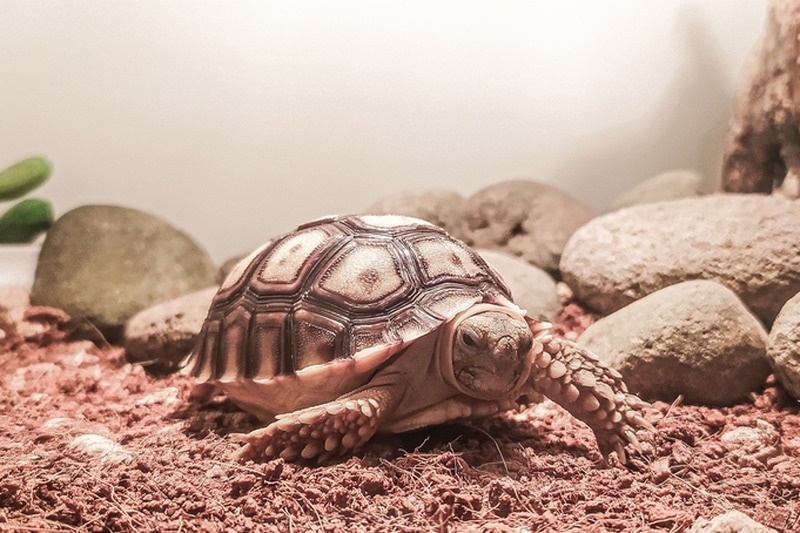
Providing the perfect enclosure for your tortoise means getting everything just right. You’ve got the enclosure itself, a suitable heat lamp and lighting, and you’ve added décor and other items, but you’re still lacking something critical to your tortoise’s wellbeing. The right substrate is not only comfortable to walk on and safe to use, but it can also offer digging opportunities and even help with humidity control within the enclosure. On the other hand, a poor substrate can cause impaction and cuts. It can lead to shell rot, respiratory problems, and even dental issues.
Below, we provide reviews of the best tortoise bedding and substrates for your shelled pet as well as a guide to help you pick the one that best suits your tortoise and its enclosure.
A Quick Comparison of Our Favorites in 2024
| Rating | Image | Product | Details | |
|---|---|---|---|---|
| Best Overall |

|
Zoo Med Forest Floor Reptile Bedding |
|
Check Price |
| Best Value |

|
Zoo Med Eco Earth Coconut Fiber Substrate |
|
Check Price |
| Premium Choice |

|
Frisco Terrarium Reptile Bedding |
|
Check Price |

|
Frisco Fir Bark |
|
Check Price | |

|
Zoo Med Premium Repti Bark Reptile Bedding |
|
Check Price |
The 10 Best Tortoise Bedding & Substrates
1. Zoo Med Forest Floor Natural Reptile Bedding – Best Overall
| Mulch Type: | Cypress Mulch |
| Volume: | 8 Quarts |
Zoo Med Forest Floor Cypress Mulch is a soft substrate and the pieces lay flat on the bottom of the enclosure, which means less danger of pieces jabbing into your tortoise’s feet. The mulch hasn’t been heat treated so it does a good job of retaining moisture, so it can also help with humidity control.
The 8-quart pack is reasonably priced and is especially well suited to tropical tortoises. It offers some burrowing opportunities and because it retains humidity within the enclosure, and is safe for use with tortoises, it is our choice as the best available tortoise bedding and substrate. However, it isn’t that easy to dig, and it can be difficult to locate and clear up the poop.
- Reasonable price
- Does a decent job of retaining moisture and controlling humidity
- Not too sharp for tortoise feet
- Not the best for burrowing
2. Zoo Med Eco Earth Coconut Fiber Reptile Substrate – Best Value
| Mulch Type: | Compressed Coconut Fiber |
| Volume: | 3 x 8 Quarts |
Compressed coconut fiber has benefits and drawbacks. The compressed bricks are easy to store and take up much less room than fully expanded substrates. However, it does take more work to get the substrate ready because you will need to break it up into smaller and more convenient pieces before putting it in the enclosure.
Zoo Med Eco Earth Compressed Coconut Fiber Expandable Reptile Substrate is actually three bricks of compressed coconut fibers, each containing 8 quarts of fiber. You do need to break the fiber up, but this can be done by adding warm water, but as well as still needing some handling to break it down, it also needs drying before you can use it for some tortoises. If yours is a tropical tortoise that needs 80% humidity, that isn’t a big deal, and putting a damp substrate in will actually help maintain the humidity level.
The coconut fiber is soft, and a little really does go a long way. It also has a low price, and this combination makes it the best tortoise substrate and bedding for the money.
- Cheap
- A little goes a long way
- Soft and comfortable
- Takes a while to dry and longer to prepare
3. Frisco Terrarium Sphagnum Moss Reptile Bedding – Premium Choice
| Mulch Type: | Sphagnum Moss |
| Volume: | 4 Quarts |
Sphagnum moss is a natural moss that is found in wetlands and peatlands in America, Europe, and Asia. It is very soft and springy, and it retains a lot of moisture, which makes it better suited to tropical tortoises because the moisture in the moss is released slowly.
However, sphagnum moss is an expensive substrate, and it can actually cause skin irritation in some people, so if you’re one of these people you will need to wear gloves while handling the moss. It is also worth noting that sphagnum moss could have taken thousands of years to develop and removing it for use as a reptile substrate means that it is effectively gone forever, as it only grows at a rate of approximately 2 inches every century.
If you’re looking for a renewable substrate source, this isn’t really it, but if you want a luxurious, premium option, then Frisco Terrarium Sphagnum Moss Reptile Bedding is a viable option. Also, the moss can be washed and reused, not indefinitely, but certainly more often than most other substrates.
- Soft and luxurious for your tortoise
- Retains moisture and therefore controls tank humidity
- Can be washed and reused
- Not environmentally friendly
- Can cause skin irritations in some people
4. Frisco Fir Bark
| Mulch Type: | Fir Bark |
| Volume: | 24 Quarts |
There are many different types of bark used as a substrate for tortoises. You should avoid using cedar and pine because these give off toxic fumes when they are heated, and these can cause respiratory problems and other conditions in your tortoises if you have heat lamps and other lights that do radiate heat. Fir bark is generally safer, and it is another substrate option that retains moisture and can form part of your humidity control efforts.
The bark is washed and sieved before packaging which helps control dust, and Frisco Fir Bark comes in a large 24-quart bag, which means you shouldn’t have to buy more for at least a few enclosure cleans. The bark is reasonably priced, but it isn’t the best option for tortoises that like to burrow because it doesn’t hold its shape after your tortie has finished digging.
- Very little dust
- Big bag should last a while
- Retains moisture well
- Not great for burrowers
5. Zoo Med Premium Repti Bark Fir Reptile Bedding
| Mulch Type: | Fir Bark |
| Volume: | 8 Quarts |
Zoo Med Premium Repti Bark Natural Fir Reptile Bedding is another fir bark bedding similar to the Frisco fir bark above, except it is more expensive and also has a finer grade of bark pieces. Finer bark typically makes it more difficult for insects to hide, but as most species of tortoise are herbivores, this doesn’t really matter. Finer bark, though, is also considered better because it has fewer sharp pieces and is softer on your tortoise’s feet.
The bark has not been heat treated so it retains moisture and keeps humidity levels up. It has been triple treated, therefore reducing dust levels, and according to the manufacturer it can be cleaned and re-used for up to 2 or 3 months, so while it is a little pricey, it can work out reasonably priced if you do manage to get a few changes out of one load.
- Cleaned and treated to reduce dust
- Can be washed and re-used
- Fine bark is soft
- Not great for burrowing
- A little expensive
6. Frisco Coco Coir Reptile Bedding
| Mulch Type: | Coco Coir |
| Volume: | 24 Quarts |
Coco coir is essentially just coconut fiber. It is made from the husk of the coconut and is used in a variety of ways, including as a substrate for reptiles and lizards. Coco coir is very fine, which means that it is soft on tortoises’ feet, and it also retains moisture well. Although bricks are easier to store, they require more preparation before the substrate can actually be used. Frisco Coco Coir Reptile Bedding is a large 24-quart bag of loose coir, so you don’t need to break it up or wet it before placing it in the enclosure, although dampening the fiber will help with humidity control so many owners do still apply some water.
The bag is reasonably priced, and the fiber is sieved before packaging, reducing the dust that some substrates give off. The bag is also resealable, which is useful in a bag of this size because it means that the substrate can be stored until the next time you need it. It doesn’t need changing too often and can be washed and reused but because this is a natural product, the quality can vary from one bag to the next and there can be a smell or even some mold in some cases.
- Can be washed and re-used
- Large bag is resealable so easy to keep
- Fine coir fiber is soft
- Quality can vary from bag to bag
- Can get moldy
7. Galapagos Tropicoco Husk Coconut Reptile Bedding
| Mulch Type: | Coconut Husk |
| Volume: | 8 Quarts |
Galapagos Tropicoco Husk Coconut Reptile Bedding is another substrate made from coconut husk. However, because this one is husk, rather than coir, it consists of much larger pieces of coconut. It does look great on the enclosure floor, and it retains moisture well, but the large pieces make it difficult for tortoises to burrow and dig, and some of the pieces can be sharper and may cause pain when your tortoise stands on them.
However, the coconut has been sieved before packaging to help reduce dust and it is very reasonably priced despite being a relatively small amount. The husk comes as a compressed brick, so it will need dampening and breaking up before it can be used.
- Sieved to reduce dust levels
- Very cheap
- Looks good on the enclosure floor
- Compressed brick needs work before it can be used
- Not the best for burrowing
8. Exo Terra Coco Husk Tropical Terrarium Reptile Substrate
| Mulch Type: | Coconut Husk |
| Volume: | 7.2 Quarts |
Exo Terra Coco Husk Tropical Terrarium Reptile Substrate is another coconut husk substrate. This is a loose substrate so it doesn’t need preparation before you can place it. It comes in a relatively small 7.2-quart bag, which won’t do too many tank cleans before you need to buy another bag, and it is quite an expensive coconut husk option.
It has been heat treated, which is supposed to prevent insects and growths but also means that the husk does not do as good a job at retaining moisture once it is in the tank. One of the benefits of using coconut husk bedding is that it should help naturally maintain humidity levels. It has also been cleaned and washed, reducing the level of dust it produces.
- Fairly soft fiber that is comfortable for tortoises
- Doesn’t produce much dust
- Not great for humidity control
- Small bag doesn’t last long
9. Galapagos Sphagnum Reptile Substrate
| Mulch Type: | Sphagnum Moss |
| Volume: | 150 cubic inches |
Galapagos Sphagnum Reptile Substrate is made from long-fiber sphagnum moss. Moss can be washed and reused, and it is a natural substrate that is soft and springy, so is comfortable for your tortoise to walk on. It is highly absorbent, too, which means it retains moisture and then releases it into the atmosphere: a great way to naturally control humidity levels in the enclosure.
However, sphagnum moss isn’t good for the environment, isn’t great for burrowing, and this is an expensive substrate option for an enclosure. It does look good on the bottom of the enclosure, though, thanks to its natural appearance.
- Natural looks good on the terrarium floor
- Retains moisture well
- Soft on the feet
- Not good for the environment
- Not great for burrowing
- Pricey
10. Repti Zoo Reversible Carpet Substrate
| Mulch Type: | Carpet |
| Volume: | 40 gallons |
Substrate carpet does have certain advantages over other forms of substrate. It can be washed and re-used, for a start, which means that it works out to be an inexpensive substrate option if used on its own. It can also be cut to fit the bottom of an enclosure, although loose substrates naturally fit into terrariums of any shape and size.
However, carpet isn’t a natural substrate. It doesn’t retain moisture in a beneficial way, either, but can become dirty very quickly. It is also unsuitable for burrowers, and if you want to provide a decent environment for a burrowing tortoise, it means combining the carpet with other substrates, which makes this substrate and bedding option an expensive one.
- Can be washed and re-used
- Cheap when used on its own
- Expensive when combined with other substrates
- Not natural
- Not suitable for burrowers
Buyer’s Guide: Choosing the Best Bedding For Your Tortoise
Substrate, which is also referred to as bedding, is the material that is placed at the bottom of an enclosure. Your tortoise will walk on the substrate and may try to burrow or dig in it. It will also pee and poop straight in the substrate. A good substrate also retains moisture, which means that it offers a natural method of helping control the humidity level in a tank.
A poor substrate can cause injury because of sharp pieces and may cause impaction if your tortoise decides to eat it. It won’t retain moisture, making it very difficult to keep humidity levels up, and it will smell and need changing frequently.
Fortunately, there are many different substrate products available so you can choose the one that best suits your tortoise’s requirements.
Substrate Types
There are various types of substrate material you can choose from. Each has its advantages and disadvantages and while some people may swear by coconut husk, others prefer soil, and yet more opt for sphagnum moss.
- Soil – Soil is a fairly basic option, but it can be a very good choice for certain species of tortoises. It is cheap and readily available but while you can buy soil from garden centers or even dig it up from your own yard, you should choose a soil that is sterile and completely free from fertilizers and other chemicals, which makes it more difficult to find an ideal soil substrate. Soil is a good choice for burrowing turtles, such as desert turtles, and it is also a good choice of substrate if you want to plant plants in the enclosure. When dry, soil can be dusty, and when wet it can compact and become difficult to dig.
- Wood Chips – Wood chips are another readily available substrate option, but there are several factors to consider when choosing this type of tortoise bedding. Avoid woods that might be toxic to your tortoise. For example, cedar and pine give off toxic fumes when heated, so if you have a heat lamp in your enclosure, avoid these because they can cause respiratory and other problems. Cypress chips are a good choice, and they can be washed and reused at least once or twice before they need to be thrown away. Wood chips also do a very good job of retaining moisture, which is good for humidity control but can lead to the formation of mold. Watch your tortoise when using wood chips because some tortoises do try eating the wood and this can prove fatal if the pieces are too big.
- Coconut Husk – Coconut husk takes many forms, from the almost granular coconut coir to the more fibrous, almost woodchip-like coconut chips. Coconut chips are softer than wood chips and even better at retaining moisture. Coir is similar to soil and is great for burrowing tortoises. It also comes in a compressed brick form, which means it is easier to store but it does require wetting and drying before use.
- Sphagnum Moss – Sphagnum moss is a natural moss that grows throughout the Northern Hemisphere. This is a very slow-growing moss that only grows a couple of inches every century, which means that ripping it up and using it as a substrate is not an environmentally friendly way to coat the floor of your tortoise’s enclosure. However, it is soft and springy, so it is comfortable to walk on and it retains moisture very well. Moss can be an expensive solution, but it can be washed and reused several times, and it doesn’t need changing or cleaning as often as a lot of other substrate materials.
- Carpet – Carpet has the benefit that it can be removed, washed, and reused. As such, it does work out to be an inexpensive option. However, it isn’t a natural substrate, and it completely prevents digging or burrowing. It can be combined with other substrates, but this makes it an expensive alternative because you will have to buy multiple different substrates.
Substrates to Avoid
There are certain substrates you should avoid. As well as cedar and pine chips, which can become toxic when heated, you should avoid paper because it gets wet quickly and can cause shell rot. Sand should also be avoided because if it is ingested it can cause real problems in your tortoise’s gut. Whole walnut shells are a bad substrate because they are sharp and as well as causing injuries due to their sharpness, they can also be swallowed. This can be potentially fatal.
Moisture Retention
When buying any substrate, consider its moisture retention levels. Some species of tortoises, especially those from tropical climates, require high humidity. While there are ways to increase humidity in the enclosure, one of the best ways to help is to use an appropriate substrate. Those that retain moisture, release this moisture into the air over time, and this keeps humidity levels up. However, if your tortoise species does not require high humidity, you should avoid substrates that encourage high levels because it can lead to shell rot and other problems.
Substrate Size
The size of the substrate pieces is important. Small pieces, or granular substrate, is generally preferred because it is softer and less likely to cause problems. This is especially important for juvenile tortoises but is still important for adults too. Larger pieces should be soft and not too sharp, or they can cause injuries.
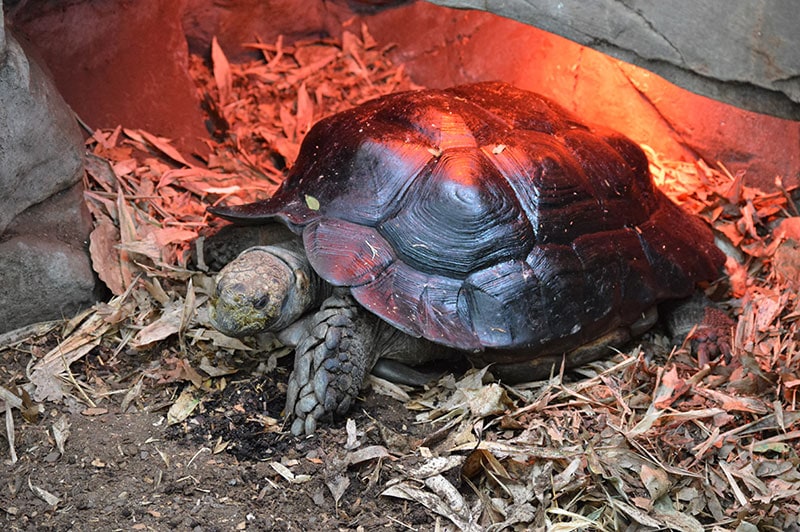
Volume
The amount of substrate you need will depend on the type of substrate, whether you combine it with other substrate materials, and the size of the enclosure you use. Buying a big bag means that you will have some leftover the next time you need to refill the base of the tank and buying a bigger bag will save you money compared to keep buying smaller bags—but it does mean that you will need to store the substrate somewhere where it won’t get damp or moldy.
In most cases, you should provide around 2 inches of substrate for smaller tortoises. Larger tortoises, and those that like to dig and make a burrow to sleep, will need deeper substrate.
How to Clean Substrate
Every 2 or 3 weeks you should clean out the whole tank. This includes changing the substrate or cleaning the existing substrate and replacing it. Between these major changes, you should clean out waste and leftover food every day. This ensures your toclean the rtie has a clean living environment and will also make the big clean easier.
Do Different Tortoise Species Need Different Substrates?
Most substrates are suitable for most tortoise species, but you can use different types according to the natural habitat of the species in question. Those from a tropical habitat, for example, benefit from a substrate that retains moisture and controls humidity. Those from a desert environment prefer something closer to soil so they can dig and burrow more easily.

Should Tortoise Substrate Be Damp?
You should avoid making the substrate too wet but dampening it can help keep humidity levels up. If the substrate gets too wet and is left wet for too long, it can start to become moldy. Lightly mist the substrate every day and use a hygrometer to measure the humidity level.
Conclusion
Tortoises need suitable and good-quality substrate in their cages. It provides a soft surface to walk on and can even help naturally manage humidity levels. Some substrates are also suitable for burrowing tortoises because they make it easy to dig and create a hole in which the tortoise can sleep, rest, or escape.
While compiling the reviews above, we found Zoo Med Forest Floor Natural Cypress Mulch Reptile Bedding to be the best overall. It is reasonably priced and does a good job of retaining moisture to control humidity. Zoo Med Eco Earth Compressed Coconut Fiber Expandable Reptile Substrate is a good choice for those on a budget, but the compressed coconut fiber does require some work before it is ready to be used in an enclosure.
Featured Image Credit: Rizal Maolana, Shutterstock
















